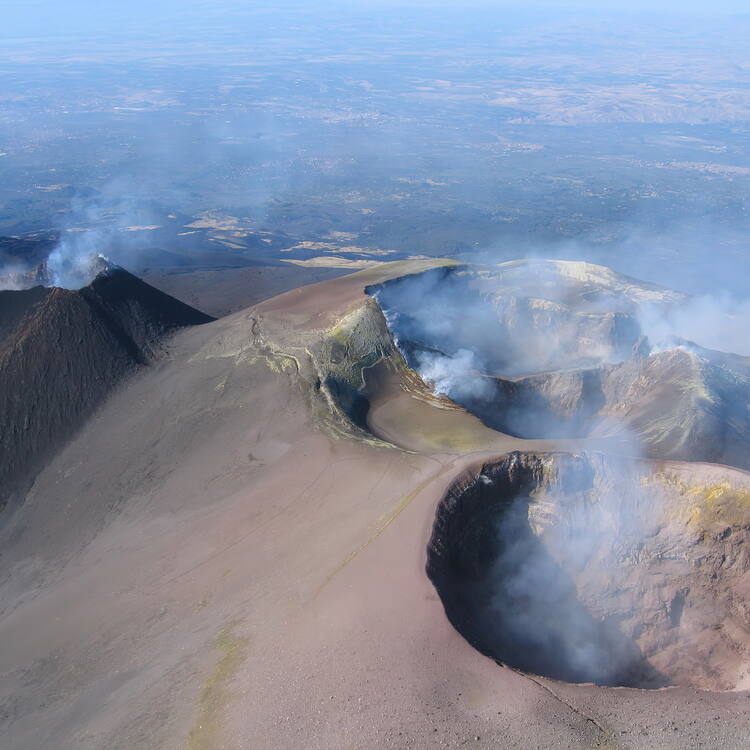Exploring Mount Etna: Europe’s Most Active Volcano
Mount Etna, known as Mt. Etna, is not only the highest volcano in Europe but also one of the most active volcanoes in the world. Located on the east coast of Sicily, Italy, Mt. Etna has captured the imaginations of volcanologists, adventurers, and tourists for centuries. This blog post aims to delve into the captivating features, history, and visitor experiences related to Mount Etna, showcasing why it deserves a spot on your travel itinerary.
The Geological Marvel of Mt. Etna
Mt. Etna stands tall at approximately 3,329 meters (10,922 feet) above sea level, making it a commanding presence in the Sicilian landscape. Its geological charm lies in its complex structure, which includes a central cone, several craters, and an extensive system of fissures that has evolved over thousands of years. The volcano has shown remarkable activity, with eruptions occurring as frequently as every few months.
Unlike many other volcanoes that have explosive eruptions, Mt. Etna is primarily known for its effusive eruptions, characterized by the flowing of lava. This behavior is attributed to the low viscosity of the basaltic magma that comprises much of the volcano. As a result, when Mt. Etna erupts, it offers a spectacular visual display, drawing visitors from near and far to witness this natural phenomenon.
A Historical Perspective
Mt. Etna has a rich and storied history intertwined with myth and legend. The ancient Greeks believed that the forge of Hephaestus, the god of fire, was located within the volcano. This mythological connection highlights the awe-inspiring nature of Etna throughout history. The first recorded eruption dates back to 1500 BC, and since then, there have been thousands of eruptions that have shaped the surrounding landscape and influenced the local culture.
The significance of Mt. Etna extends beyond its geological features; it has also influenced the agricultural practices in the region. The volcanic soil, enriched with minerals from eruptions, produces fertile farmland, known for its rich wines and agricultural products. Etna wine has gained a reputation for its unique flavor profile, thanks to the specific conditions created by the volcano’s activity.
Cultural Significance and UNESCO World Heritage Site Status
In recognition of its outstanding universal value, Mt. Etna was designated a UNESCO World Heritage Site in 2013. This accolade highlights not only the natural beauty of the volcano but also its cultural significance to the local communities. The site includes the mountain itself, surrounding landscapes, and historic settlements, which together showcase the interaction between humans and their environment.
For more detailed insights, you can check the official UNESCO listing here: Mount Etna – UNESCO World Heritage Centre.
Visiting Mount Etna: What to Expect
Visiting Mt. Etna is an unforgettable experience, attracting roughly 1 million tourists annually. The best time to experience the volcano is during the warmer months, typically from May to October, when access routes are clearer, and the weather is more accommodating. Visitors can choose from various tours, ranging from guided hikes to cable car ascents, allowing everyone from casual tourists to avid adventurers to explore this magnificent natural wonder.
There are several routes to approach the crater, each offering unique perspectives of the stunning landscape. A guided tour often includes educational components, where visitors learn about the geology, flora, and fauna of the area. The tour guides are knowledgeable and often share personal anecdotes about their experiences with the volcano, making the trips even more engaging.
Safety Considerations
While Mt. Etna is an incredible destination, it is essential to be aware of safety considerations when visiting an active volcano. The situation can change rapidly, and eruptions or seismic activity can pose risks. It is crucial to stay updated on the volcano’s status and follow the instructions given by local authorities and tour operators. Visitors should also wear appropriate footwear and carry enough water, as hiking can be physically demanding due to the rocky terrain.
Conclusion
In conclusion, Mount Etna, or Mt. Etna, is much more than just a volcano; it is a dynamic landscape steeped in history and sprinkled with cultural significance. From its geological marvels to its vibrant agricultural traditions and its designation as a UNESCO World Heritage Site, Mt. Etna offers an enticing allure for visitors of all ages. The chance to witness its unpredictable eruptions and the immense beauty of its surroundings makes it a must-visit destination for travelers seeking both excitement and inspiration. So pack your bags and prepare to explore the majestic Mt. Etna!
By understanding and respecting the power and beauty of this active volcano, we can appreciate not only the natural world but also the stories and heritage that shape our understanding of it. Visit Mt. Etna for an experience that combines adventure, education, and a deep appreciation for nature’s wonders.






